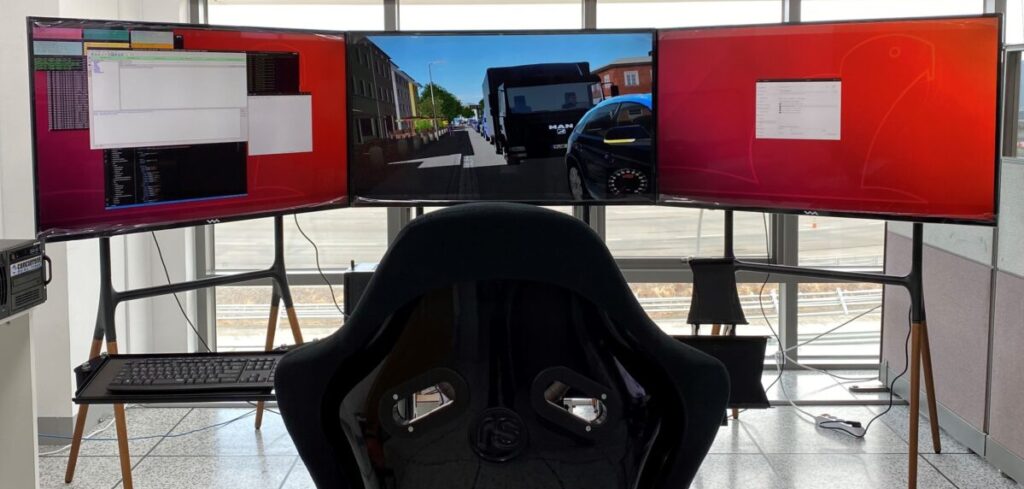A high-fidelity virtual test platform has been developed by Korean research institute Katech to validate ADAS and autonomous driving systems in urban environments utilizing an MSC Software Corporation environment. This architecture builds on Katech’s real-world testing of self-driving vehicles. It intends to build basic environment data and data to support certifications and laws related to autonomous driving in Korea.
The institute invested in MSC’s Adams software for the replication of vehicle dynamics in 2019, subsequently implementing the company’s VIRES Virtual Test Drive (VTD) software for creating virtual road environments. By combining these virtual test solutions from Hexagon, it is now able to perform highly realistic simulations to investigate and test ADAS and AD systems.
Seong-Jin Kwon, director of the Vehicle Safety Research Center at Katech, says, “In order to study autonomous vehicles, all platforms, such as simulation and real vehicle tests, had to be built, including building an autonomous vehicle simulation environment, and using it to create conditions in which the driver either has to intervene, or not intervene, in real time. There have been many attempts to link everything, but it was harder than expected, so we had to proceed with the simulation and simulator parts that were realistically possible.”
One of those elements was modeling of the entire south Korean city of Daegu Technopolis and Daegu National Industrial Complex and transferring it into a virtual environment. The city’s infrastructure makes it ideal for testing driverless vehicles and it is aiming to establish itself as a global hub for conducting those tests. Dr Seong-Jin Kwon says that as well as building precise maps for autonomous driving, there is also a real-time monitoring system for vehicles and their surrounding conditions, along with a data collection, storage and analysis system – readying Daegu Technopolis and Daegu National Industrial Complex for autonomous vehicle research.
Katech used Adams Real Time in combination with VTD and 3D mapping data from Hexagon’s Leica Geosystems business to build this simulation environment. The team was already familiar with Adams in vehicle dynamics test tasks, and VTD had been used by other divisions. Combining these two solutions provided a comprehensive answer to complex toolchain issues. This is achieved by employing real-time simulation to provide the stability and deterministic results required irrespective of the variations in the fidelity of simulation that are introduced by including multiple vehicle dynamics models or different scenarios.
Adams Car enables Katech to build virtual prototypes of vehicles using prebuilt templates. “We run these through multiple open and closed-loop scenarios, meaning we can perform the same tests virtually, which we usually run in a test lab or on a test track,” explained Kwon. Engineers can hone in on any aspect of the vehicle dynamics, and utilize the same vehicle model, during all stages of development, from design to validation.
Using standard tool-independent interfaces, Adams connects to VTD, enabling Katech to create a virtual environment resembling the real world. “It means we’re able to simulate complex urban situations including pedestrians with unpredictable behavior, weather variations, visibility and vehicle dynamics. The combination of Adams and VTD is our starting point for analyzing ADAS functionality and autonomous vehicles.”
Dr Seong-Jin Kwon said that VTD easily met one of Katech’s vital requirements – namely the ability to provide full flexibility to integrate with third party tools – and used data provided in the OpenDrive, OpenCRG, and OpenScenario standard formats to create road networks and incorporate dynamic behavior such as road surfaces and traffic.
Crucially VTD’s physics-based simulation of the lidar and radar sensors around a vehicle helps to determine ‘false-positives’ where a vehicle’s perception of its surroundings is impaired. Because these sensor models employ ray tracing techniques, Katech can scale from a few high-resolution images to a large number of lower resolution images depending upon the number of rays that must be simulated to adequately test a given system.


